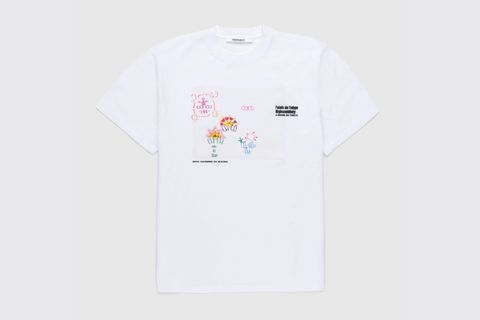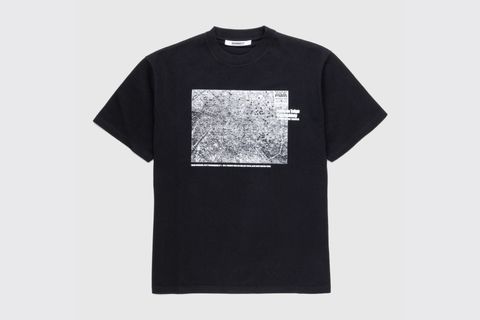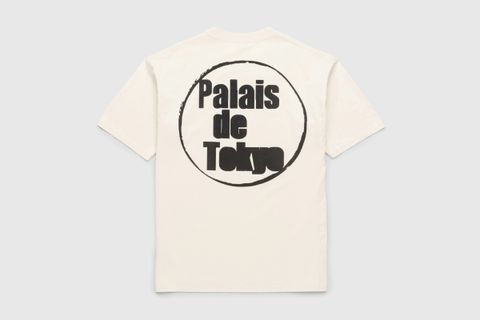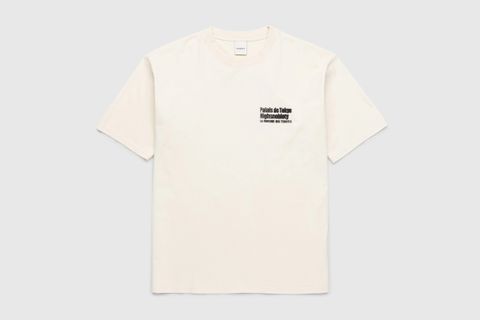Graffiti’s Countercultural Power Is Being Celebrated At Palais de Tokyo
Termites were made to break down constraints. The creatures, always awake, have developed a reputation for their unyielding dedication to breaking down decaying bits of wood, leaves, and soil throughout history. Their process isn’t just integral to paving the way for new life to rise up from the remnants — it also makes for a pretty damn good metaphor for a certain type of art.
In Manny Farber’s 1962 essay, “White Elephant Art vs. Termite Art,” the small insects — plus tapeworms, fungus, and moss — provide fertile inspiration for the artist and critic. “A peculiar fact about [termite] art is that it goes always forward, eating its own boundaries, and, likely as not, leaves nothing in its path other than the signs of eager, industrious, unkempt activity,” he explains in the Winter 1962 issue of Film Culture. White elephant art, in comparison, was “masterpiece art, reminiscent of the enameled tobacco humidors and wooden lawn ponies bought at white elephant auctions decades ago.”
In the notoriously stuffy art world, it’s fitting that his concept of “termite art” has become tied to the graffiti movement in “Il Morso Delle Termiti,” a sprawling new exhibition curated by Hugo Vitrani at Palais de Toyko that runs until September 10, 2023.
Conceived as a “re-reading of art history through the prism of graffiti,” the massive show features works by more than fifty contemporary artists who embody the spirit of “termite art.” While not the first time that Farber’s neologism has formed the inspiration for a museum exhibition, “Il Morso Delle Termiti” is the most direct — expanding upon the concept by reframing it through an art style as relevant historically as it is socially.
For the New York-based contemporary artist Roberto Gualtieri, it’s “an art form that has a lot of power.” In the late 1960s, Gualtieri became one of the city’s first “writers” at just 14 years old, sprawling his COCO 144 alias — a combination of his Puerto Rican pet name and 144th Street where he grew up in Harlem — across subway cars, underground tunnels, and concrete walls. It was the beginning of a new art movement that swept up the world as fellow artists like Jean-Michel Basquiat and Keith Haring turned anything and everything into a canvas. Within a few years, he had founded the United Graffiti Artists, been commissioned alongside fellow writers to paint a live backdrop for the 1973 ballet Deuce Coupe every night, and started to transition into works on canvas.
As he prepares to not only show work at Palais de Tokyo but also immortalize one of his works as part of Highsnobiety's collaboration with the museum (available to shop now), Gualtieri can’t help but feel a bit stunned at the new life of this particular piece. “It was '73, I was just trying to come up with different ideas,” he recalls during a video chat from his Bronx apartment. “I was just searching, trying to come up with different designs, different motifs.”
As powerful as it is to have this early, rough sketch make it into a major art show in Paris, it also shows the unyielding relevancy of the movement. “It's mind-blowing. I feel so grateful and so honored that I took part in the writing culture, of this aerosol culture, in its infancy. I took part in building the foundation.” There is a subversive element to the medium, but to claim “graffiti” solely as an art style would be reductive (not only because of the derogatory connotations the media has attached to it). As the exhibition text explains: “Graffiti is neither a subject nor an aesthetic but rather an experience, an attitude, an imaginary, an underground current of thought.”
To put that another way: “Graffiti” is more than just paint sprayed onto public surfaces — it’s a vibe. It doesn’t just apply to the work of legendary New York writers like COCO144 but also to artists like French icon Tania Mouraud. Over the course of the exhibition, Mouraud will display two works, both recreations of major works from the ‘70s, at Palais de Tokyo.
In the first, massive letters scrawled across a plastic sheet spell out the words: “Belonging to the wall.” In the original conceptual series, she had been “analyzing the see-er, seeing, and seen.” With the recreation, the original message is restored to once again ask viewers to consider the very foundation of how art is displayed, culminating in a second piece that references her site-specific series, “City Performance N° 1” (1977-78). In the original series, fifty-four billboards throughout eastern Paris displayed the same word in big, bold lettering: NI. Stretched across four-by-three-meter posters, the word (literally meaning neither/nor) represented her staunch disapproval of the capitalist-fueled society. In the new iteration, two photos will be shown: one of the map that displays the location of all 54 billboards and one documenting the original artwork.
Even now, as the 81-year-old artist calls in for a video chat from her home in the French countryside, she embodies the anti-establishment spirit that fuels the “Il Morso Delle Termiti” exhibition. “I disagree with everything our so-called civilization offers us. Consumerism and all that,” she explains. “I disagree with everything they propose to us.” Whether raised by two members of the French Resistance like Mouraud or born into a working-class family in the Bronx like Gualtierin or anywhere in between, crackling, countercultural energy unites the multitude of so-called “termite artists” participating in the show.
The ethos of graffiti and termite art doesn’t just form a connective tissue for the “Il Morso Delle Termiti” exhibition but rather unites the world as a whole. As Gualtierin notes: “Anywhere you're going to go on this planet, you're going to see writing on the walls. It just keeps on getting stronger and stronger.”







